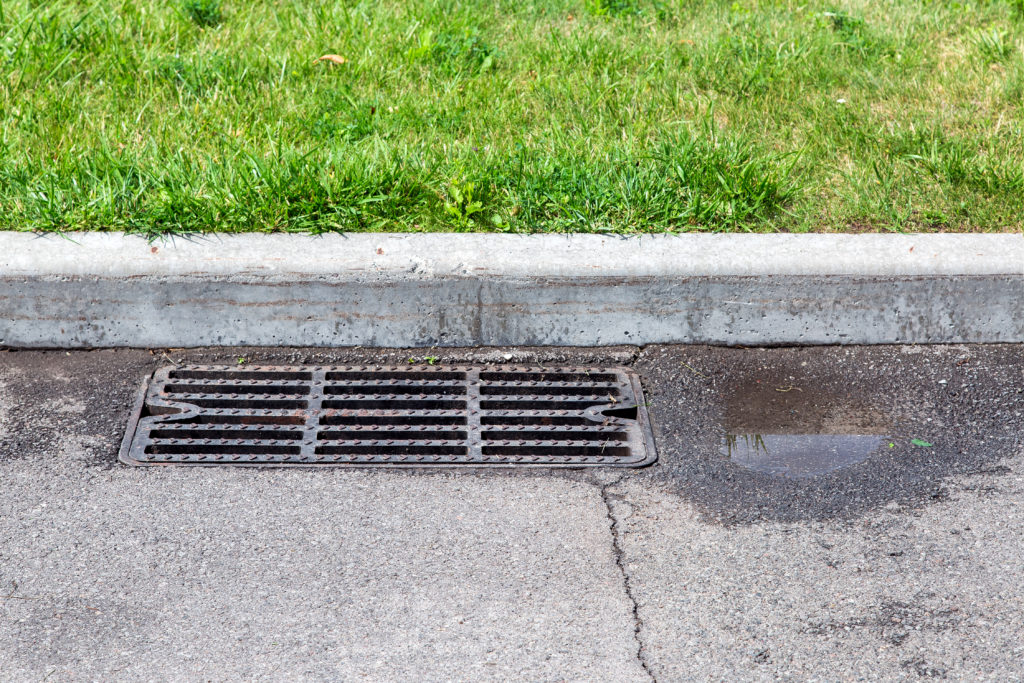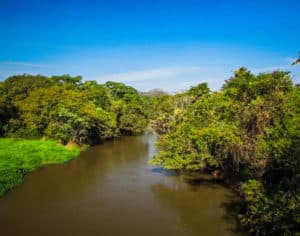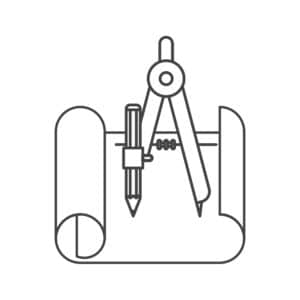Another major component of a land development project is the storm drainage system which ensures that the proposed construction drains stormwater runoff properly.
Storm drainage refers to the collection of stormwater runoff during a rainfall event and the conveying of that water through a portion of land either to be discharged to a stormwater management system or to be conveyed off the site.
A storm drainage system refers to the series of storm drain inlets and pipes that are designed to safely convey stormwater through a site.
This post will discuss what is involved with a full storm drainage system design for a proposed land development.
Inlet and Pipes Locations
One of the first steps in creating a storm drainage system is determining where inlets and pipes should in general be located.
The main reason for using a storm drain inlet is to collect rainwater from a significant drainage area. Therefore, you would not normally use them at high points in the ground unless one was required to function as a connection point. However, you would have to have one at every low point in a proposed graded area. This would especially be the case for proposed roads or driveways.
After placing storm drain inlets at all low areas, extra inlets would have to be placed throughout your site to prevent too much drainage area and too much stormwater from draining to any individual inlet. This keeps open space areas and parking areas from allowing excessive ponding of water. Extra inlets also help to prevent the excessive spread of stormwater onto the sides of a proposed road of driveway so that enough of a travel lane can be maintained during the chosen design storm event.
Once the required number of storm drain inlets along with their locations have been determined, the next step of the storm drainage system design is to figure out the locations of the storm drain pipes that have to connect the inlets. There have to be enough drainage pipes to connect all proposed inlets to the final designated outfalls.
During the design of the storm drain layout, a design engineer will try to minimize the amount of piping that is required in order to minimize overall construction costs.
Advertisement
Storm Sewer Pipe Sizes
After storm drain inlet and pipe locations have been designed, the sizes of the storm drain pipes have to be determined.
Some common storm sewer pipe sizes for a land development project include 12 inches, 15 inches, 18 inches, 24 inches, and 30 inches.
The pipe size chosen for the design is dependent on many different factors. The main factor is the total stormwater amount that would be flowing to that pipe during the chosen design storm event. The stormwater amount would include the flow to the main inlet at the beginning of the pipe as well as the flow from any other inlets that are connected to the main inlet.
Other factors involved with the storm sewer pipe sizing include the slope of the proposed pipes and the chosen pipe material.
Selection of Pipe Material
The pipe material chosen will affect the capacity of the storm sewer system and what pipe sizes to use in the design. One of the factors involved in determining the capacity of a storm drainage pipe is the roughness of the pipe material along which stormwater flows. A pipe that has a rough flow surface will have a lower capacity than a pipe with a smoother flow surface assuming that the other design factors (such as pipe size and slope) are equal.
The most common types of storm drainage pipe material used in land development include corrugated metal, high-density polyethylene (HDPE) plastic pipe, and reinforced concrete.
The pipe material chosen for any particular project is usually dependent on the ordinances of the municipality within which your project is located. If your project involves proposed storm drainage pipe that is located within a state department of transportation (DOT) right-of-way, that DOT might have its own requirements for pipe material selection.
Selection of Storm Drain Inlets
Storm drain inlets are the structures that capture stormwater runoff at the various collection points within a land development site and that provide connection points for the storm drainage pipes within a storm drainage system. Each structure is the combination of a grate and the box (usually concrete) under the grate to which storm drain pipes connect and from which storm drain pipes exit.
The selection of which storm drain inlet to use within a storm drainage system design depends on the location of the inlet. An inlet along the side of a road with a proposed curb might require the use of a curb inlet that is designed to properly connect to the surrounding curb and that might or might not include a grate. An inlet in a grass area might only require a grate inlet to properly collect stormwater runoff.
Related: What Is a Storm Drain?
Other Design Considerations
Some other things that might have to be considered with regard to a storm drainage system design include swales, end treatments, and riprap aprons.
Unless a drainage swale is designed to drain stormwater runoff directly off the site or to a stormwater management system, a storm drain inlet might be required at the end of the swale to collect the water and convey it somewhere else. Additional inlets might also be required within the swale to prevent the swale from carrying too much water during a design storm event.
End treatments are the structures such as flared end sections and endwalls that are attached to the last storm drainage pipe section of a system. These structures allow for more efficient flow of water at these discharge areas. They also allow for easier grading at these areas during construction.
Riprap aprons are pads of rock that are designed to slow down the velocity of the flow at the outlets of a storm drainage system in order to prevent excessive erosion at these areas.
Advertisement
The Design Process
The following are the main steps involved in the design of a storm drainage system.
1) Research regulatory ordinances to determine storm drainage system design requirements.
2) Determine the locations of the proposed inlets.
3) Determine the storm drainage pipe locations.
4) Prepare hydrology calculations for the inlets to determine stormwater flow rates.
5) Design storm drainage pipe sizes.
6) Design the riprap aprons.
The Cost of a Storm Drainage System Design
The cost of the portion of a land development project for the storm drainage system design can be expensive and the cost varies depending on the size of the project. You can expect the cost to be a couple of hundred dollars to a couple of thousand dollars for a full design.



